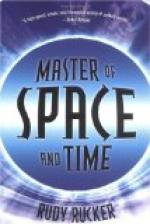An amalgamation of the scattered, competing lines was needed, both to secure better service for the public and proper dividends for the investors. This amalgamation was effected by Mr. Hiram Sibley, who organized the Western Union in 1856. The plan was ridiculed at the time, some one stating that “The Western Union seems very like collecting all the paupers in the State and arranging them into a union so as to make rich men of them.” But these pauper companies did become rich once they were united under efficient management.
The nation was just then stretching herself across to the Pacific. The commercial importance of California was growing rapidly. By 1857 stage-coaches were crossing the plains and the pony-express riders were carrying the mail. The pioneers of the telegraph felt that a line should span the continent. This was then a tremendous undertaking, and when Mr. Sibley proposed that the Western Union should undertake the construction of such a line he was met with the strongest opposition. The explorations of Fremont were not far in the past, and the vast extent of country west of the Mississippi was regarded as a wilderness peopled with savages and almost impossible of development. But Sibley had faith; he was possessed of Morse’s vision and Morse’s courage. The Western Union refusing to undertake the enterprise, he began it himself. The Government, realizing the military and administrative value of a telegraph line to California, subsidized the work. Additional funds were raised and a route selected was through Omaha and Salt Lake City to San Francisco.
The undertaking proved less formidable than had been anticipated, for, instead of two years, less than five months were occupied in completing the line. Sibley’s tact and ability did much to avoid opposition by the Indians. He made the red men his friends and impressed upon them the wonder of the telegraph. When the line was in operation between Fort Kearney and Fort Laramie he invited the chief of the Arapahoes at Fort Kearney to communicate by telegraph with his friend the chief of the Sioux at Fort Laramie. The two chiefs exchanged telegrams and were deeply impressed. They were told that the telegraph was the voice of the Manitou or Great Spirit. To convince them it was suggested that they meet half-way and compare their experiences. Though they were five hundred miles apart, they started out on horseback, and on meeting each other found that the line had carried their words truly. The story spread among the tribes, and so the telegraph line became almost sacred to the Indians. They might raid the stations and kill the operators, but they seldom molested the wires.
Among many ignorant peoples the establishment of the telegraph has been attained with no small difficulty. The Chinese showed a dread of the telegraph, frequently breaking down the early lines because they believed that they would take away the good luck of their district. The Arabs, on the other hand, did not oppose the telegraph. This is partly because the name is one which they can understand, tel meaning wire to them, and araph, to know. Thus in Arabic tele-agraph means to know by wire.




